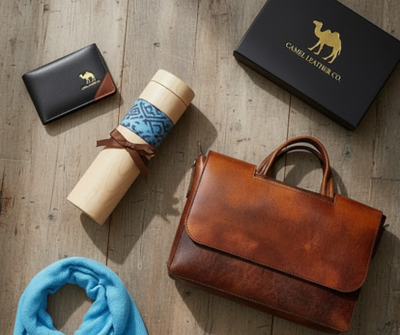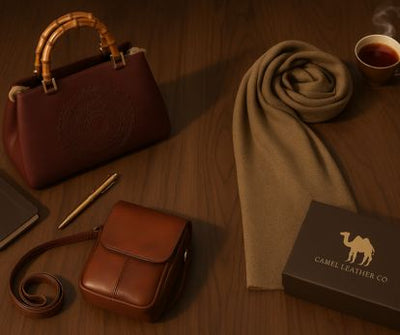Why is men's Arabic Scarf so expensive?
The Middle East may have transformed dramatically in terms of technology and development. However, when it comes to fashion, tradition and culture reign supreme. Arab men have worn headdresses for protection from their desert environment's scorching heat, sand, and wind since ancient times. As a result, Arabs take pleasure in adhering to their traditional clothing code.
It is customary for citizens of the six Gulf Cooperation Council nations—Saudi Arabia, Kuwait, Bahrain, Qatar, the United Arab Emirates, and Oman—to dress and accessorize in traditional Arab garb. A traditionally handcrafted headdress in the Middle East is the shemagh scarf. It also goes by the names ghutrah and Keffiyeh. It is fastened with a strong rope called an agal and worn around the head or the shoulders. A headdress's design and selection may reveal a lot about a person's position, religion, and country of origin.
Pashmina Shemagh
A sumptuous Pashmina fabric's dramatic beauty and decorative charm had a very humble origin. Pashmina Mussar is the best and most expensive fabric on the planet. This exquisite wool is derived from the Changthangi Goat, which can only be found 15000 feet above sea level in Ladakh - Jammu & Kashmir. The exquisite ghutra or Shemagh is made from the finest Kashmiri pashmina fabric. Arabic men wear this Kashmiri pashmina as a traditional head scarf.
Pashmina's tryst with royalty
Pashmina was discovered in the 16th century, when the birthplace of the fabric, Kashmir, was under Mughal dominion. Pashmina's charm and classic elegance enchanted the Mughal kings of the day before, captivating monarchs, royals, and people worldwide. Later, the aesthetics of this craft expanded, and French monarch Napoleon Bonaparte gave a Pashmina to his wife, Josephine. In Iran, monarchs wore and gave Pashminas as part of their political traditions. Maharaja Ranjit of India adorned his court with hand-embroidered Pashminas.
Why is this men's Arabic Scarf so expensive?
Pashmina weaving has always been a difficult task. From combing out the Changthangi goats' fleece to extracting individual fibers, hand spinning it into yarn, complete weaving, coloring, and exquisite embroidery. The number of man-hours invested in all of these stages is astounding!
A Kashmiri pashmina was once reserved for nobility. This artistic tapestry is woven by hand on a wooden loom and is favored by kings and queens. This craft is only practiced by professional Kashmiri artisans. Hand stitching is incredibly tough on a delicate fabric like a pashmina. Each ghutra or scarf takes 2 to 6 months to produce, which is why the Shemagh or ghutra is so expensive.
Original Pashmina from the right seller
There is no doubt about it. Pashmina has had a resurgence in popularity and demand over the past few years. Because all of them are handcrafted, it would take the artist time to manufacture more. On the other hand, for customers who are new to this luxurious fiber, the variety of pashminas on the market makes it difficult to choose. This gave rise to fake Pashmina. It is difficult to tell the difference between a fake and a genuine one. For that reason, it is essential to buy from an authentic seller. You can only trust the authenticity certificate provided and the reputation of the store selling it.
Men's original Kashmiri Mussar or ghutra in Dubai
Pashmina is regarded as the world's best handicraft, transforming incredibly warm and delicate Cashmere strands into sumptuous accessories. At Nomadic Camel, we specialize in exclusive one-piece only ghutra or the Shemagh made with the finest and authentic Kashmiri Pashmina Mussar with some of the finest traditional craftsmanship unmatched anywhere in the world.
Our incredible selection of authentic Pashminas has been manufactured using the finest traditional artisanship weaving methods with the highest quality pashm (the wool of Himalayan goats) for over 25 years. We at Nomadic Camel have been supplying royalties from Saudi Arabia, Lebanon, and other gulf nations.
Get ready for your next adventure in the desert with this nomadic camel pashmina. Protect yourself from the elements with this Shemagh scarf made from 100% pure cashmere wool, making it suitable for everyday use. We make it easier for you to buy a variety of men's Arabic scarf online from the comfort of your home, and with the peace of mind of buying an original with the guarantee of the best ghutra price in Dubai.
FAQs
Why do Arabs wear scarves?
The Middle East is mostly desert. With heat, sand, dust, and grit blown around by the slightest breeze, the scarves can be pulled up over the mouth and nose (and, if required, the eyes) to protect oneself.
What is the Arabian scarf called?
Your face and neck can be shielded from the sun, wind, and sand with the Shemagh, commonly referred to as the Keffiyeh or Arab Scarf. It's also an excellent alternative winter headwear, especially in areas with snow and strong winds.
What's the difference between Keffiyeh and Shemagh?
The traditional Bedouin headgear is the Shemagh (pronounced ‘Shmaar’ in Arabic). Its uses are almost identical to those of the Keffiyeh. It is, however, fashioned of considerably thicker cotton, and wool is occasionally braided into it to enhance its structure.



 Same Day Delivery in Dubai
Same Day Delivery in Dubai
 Secure Checkout
Secure Checkout
 Free Shipping in UAE
Free Shipping in UAE
 Worldwide Shipping
Worldwide Shipping